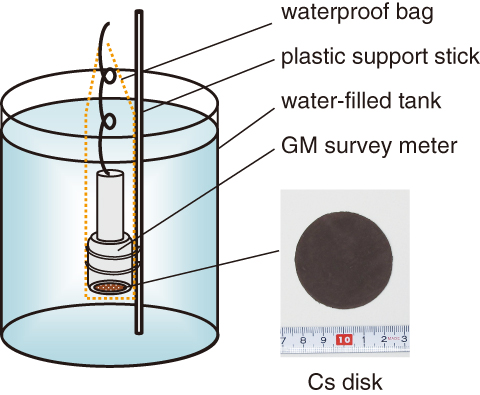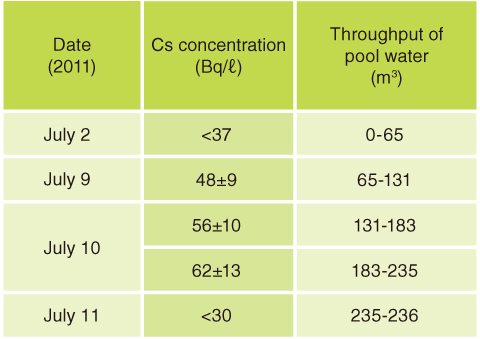
Fig.1-18 A new assay system for monitoring the radioactive Cs concentration in water
Table 1-1 Application to outdoor school swimming pool water decontamination

In areas contaminated by the discharge of radioactive cesium (Cs) from the accident at the TEPCO’s Fukushima Daiichi NPS, continual monitoring of water and decontamination activities have been conducted. These field operations demand an easy method for monitoring the radioactive Cs concentration in water.
We developed a new assay system using a cesium adsorption disk (Cs disk) and a Geiger-Mueller (GM) survey meter for field operations (Fig.1-18). This assay system comprised (1) the adsorption of radioactive Cs on a Cs disk by filtering of water, (2) the determination of the β count rate of the Cs disk using the GM survey meter, and (3) the calculation of Cs radioactivity on the basis of a calibration factor. The Cs disk (Sumitomo 3M Co. Ltd., Empore™ Cs Rad Disk) contains Cs adsorbent in its matrix.
Some features of our assay system included: high detection sensitivity to β-rays, an easy method of use involving only portable apparatuses, and applicability to water samples contaminated only with 134Cs and 137Cs. In addition, because the calibration factor of 137Cs is larger than that of 134Cs, the use of the former factor led to conservative evaluations.
In the decontamination of an outdoor school swimming pool in Fukushima in July 2011, our assay system was applied to the determination of the radioactive Cs concentration in the pool water. About 100 mℓ of the samples collected from the pool water had a radioactive Cs concentration below ∼60 Bq/ℓ. Since this value was below the effluent standard value at that time (200 Bq/ℓ), the decontaminated pool water was pumped out into a nearby river (Table 1-1).
Our assay system is expected to be applied to the monitoring of tap water, because its detection limit reaches 1 Bq after about 10 min of the measuring time.